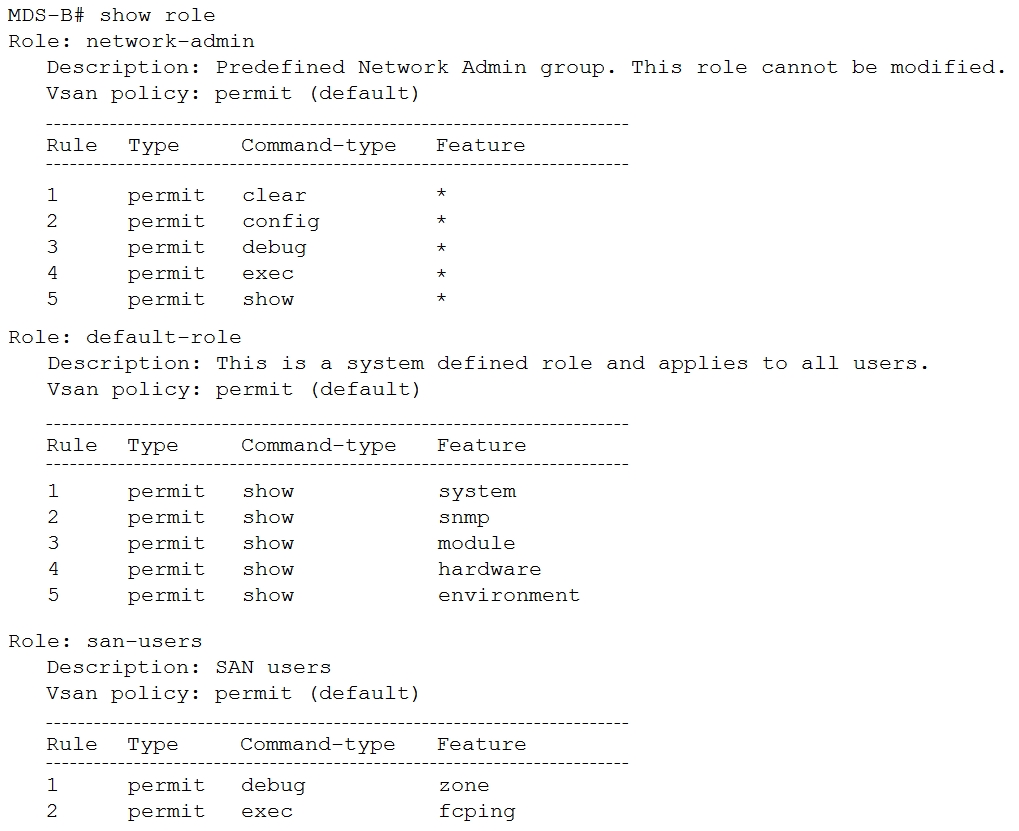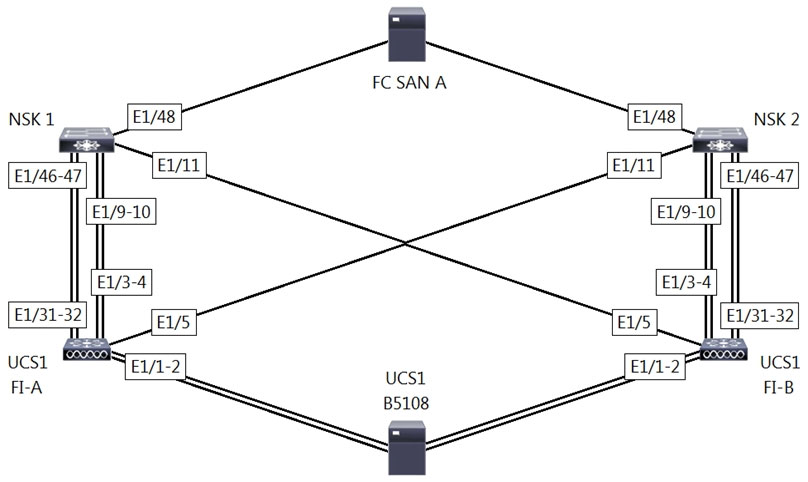A customer reports Fibre Channel login requests to a Cisco MDS 9000 Series Switch from an unauthorized source. The customer requires a feature that will allow all devices already logged in and learned to be added to the Fibre Channel active database. Which two features must be enabled to accomplish this goal?
(Choose two.)
DE
By default, the port security feature is not activated in any switch in the Cisco MDS 9000 Family.
By activating the port security feature, the following apply:
ג€¢ Auto-learning is also automatically enabled, which means:
ג€" From this point, auto-learning happens only for the devices or interfaces that were not logged into the switch.
ג€" You cannot activate the database until you disable auto-learning.
ג€¢ All the devices that are already logged in are learned and are added to the active database.
ג€¢ All entries in the configured database are copied to the active database.
After the database is activated, subsequent device login is subject to the activated port bound WWN pairs, excluding the auto-learned entries. You must disable auto-learning before the auto-learned entries become activated.
When you activate the port security feature, auto-learning is also automatically enabled. You can choose to activate the port security feature and disable auto- learning.
Reference:
https://www.cisco.com/en/US/docs/storage/san_switches/mds9000/sw/rel_3_x/configuration/guides/fm_3_3_1/psec.html
A network engineer must prevent data corruption due to cross fabric communication in an FCoE environment. Which configuration must be applied to the Cisco
Nexus Unified Switches to achieve this objective?
C
You can prevent data corruption due to cross-fabric talk by configuring an FC-Map that identifies the Fibre Channel fabric for this switch. When the FC-Map is configured, the switch discards the MAC addresses that are not part of the current fabric. An FCF can assign Fabric Provide MAC Addresses (FPMA) to the CNAs consisting of the FC-Map Value for the Fabric and the Fibre Channel ID (FCID) assigned during Fabric Login switch# switchto vdc fcoe type storage fcoe# configure terminal fcoe(config)# fcoe fcmap 0x0efc2a
Reference:
https://www.cisco.com/c/en/us/td/docs/switches/datacenter/nexus5000/sw/fcoe/521n11/b_5k_FCoE_Config_521N11/configuring_fcoe.html
Which NFS version uses the TCP protocol and needs only one IP port to run the service?
C
One big advantage of NFSv4 over its predecessors is that only one UDP or TCP port, 2049, is used to run the service, which simplifies using the protocol across firewalls.
Reference:
https://en.wikipedia.org/wiki/Network_File_System

Refer to the exhibit. A network engineer created a new role to be assigned to the SAN users. The requirement is for users to have these characteristics:
* permitted to show access to the system, SNMP, module, and hardware information.
* permitted to run debug zone and exec fcping commands.
* restricted from accessing show feature environment command.
Which configuration set meets these requirements?
C
Reference:
https://www.cisco.com/en/US/docs/storage/san_switches/mds9000/sw/rel_2_x/san-os/configuration/guide/cfgur.pdf
What is a characteristic of the NFS protocol?
A
When a client wants to perform some type of action on a file on a particular machine, it uses RPC to make a call to the NFS server on that machine. The server accepts the request and performs the action required, then returns a result code and possibly data back to the client, depending on the request. The result code indicates if the action was successful. If it was, the client can assume that whatever it asked to be done was completed. For example, in the case of writing data, the client can assume the data has been successfully written to long-term storage.
NFS can operate over any transport mechanism that has a valid RPC implementation at the session layer.
A storage array must be connected to port ethernet1/10 on a Cisco MDS 9000 Series Switch. In addition, the array must connect using the FCoE protocol and be single-homed. Which configuration meets these requirements?
B
We must use mode f, because in a switch, on a port which connects to a node, we configure an F port (fabric port). On the endhost (array/storage) side, this port is an N (node) port.
What is the impact of an EPLD upgrade on a Cisco MDS 9000 Series Switch?
C
When you upgrade or downgrade the EPLDs, observe the following guidelines and limitations:
ג€¢ You can upgrade each module only when it is online. The EPLD upgrade is only disruptive to the module being upgraded.
ג€¢ If you interrupt an EPLD upgrade or downgrade, the module must be upgraded again.
ג€¢ In Cisco MDS 9000 Director Switches, EPLD upgrade or downgrade can only be executed from the active supervisor module. To upgrade the supervisor
EPLDs nondisruptively, upgrade the standby supervisor and then switchover. After the new standby supervisor is online its EPLDs can be upgraded.
ג€¢ In Cisco MDS 9000 Series Fabric Switches, be sure to specify 1 as the module number. The switch must be power cycled for the EPLDs to start running the new code.
Reference:
https://www.cisco.com/c/en/us/td/docs/switches/datacenter/mds9000/sw/8_x/release_notes/epld/epld_rn_8x.html
An engineer must implement the FCoE on the Cisco Nexus 9000 Series Switch-based infrastructure. The deployment will contain dual-homed fabric extenders and must support jumbo frames with port channels. Which two sets of actions complete the configuration? (Choose two.)
AD
Reference:
https://www.cisco.com/c/en/us/td/docs/switches/datacenter/nexus9000/sw/92x/fcoe/configuration/guide/b-cisco-nexus-9000-nx-os-fcoe-configuration- guide-92x/b-cisco-nexus-9000-nx-os-fcoe-configuration-guide-92x_chapter_0100.pdf

Refer to the exhibit. A network engineer must configure port E1/31-32 to forward only storage server traffic of VLAN 200 on Cisco fabric interconnects A and B.
Port E1/31-32 is not reserved for any other traffic. Which port type must be configured to accomplish this goal?
B
FCoE uplink ports are physical Ethernet interfaces between the fabric interconnects and the upstream Ethernet switch, used for carrying FCoE traffic. E1/31-32 is the link between the 2 switches and between switch and FI.
What is an advantage of NFS as compared to Fibre Channel?
B
When we create VMs on the NFS-LUN, the wizard only lets you choose for Thin Provisioning, which is normal and good since we only use the datastore for templates.
Reference:
https://communities.vmware.com/t5/ESXi-Discussions/NFS-Thin-Provisioning-becomes-thick-after-creation/td-p/1296112